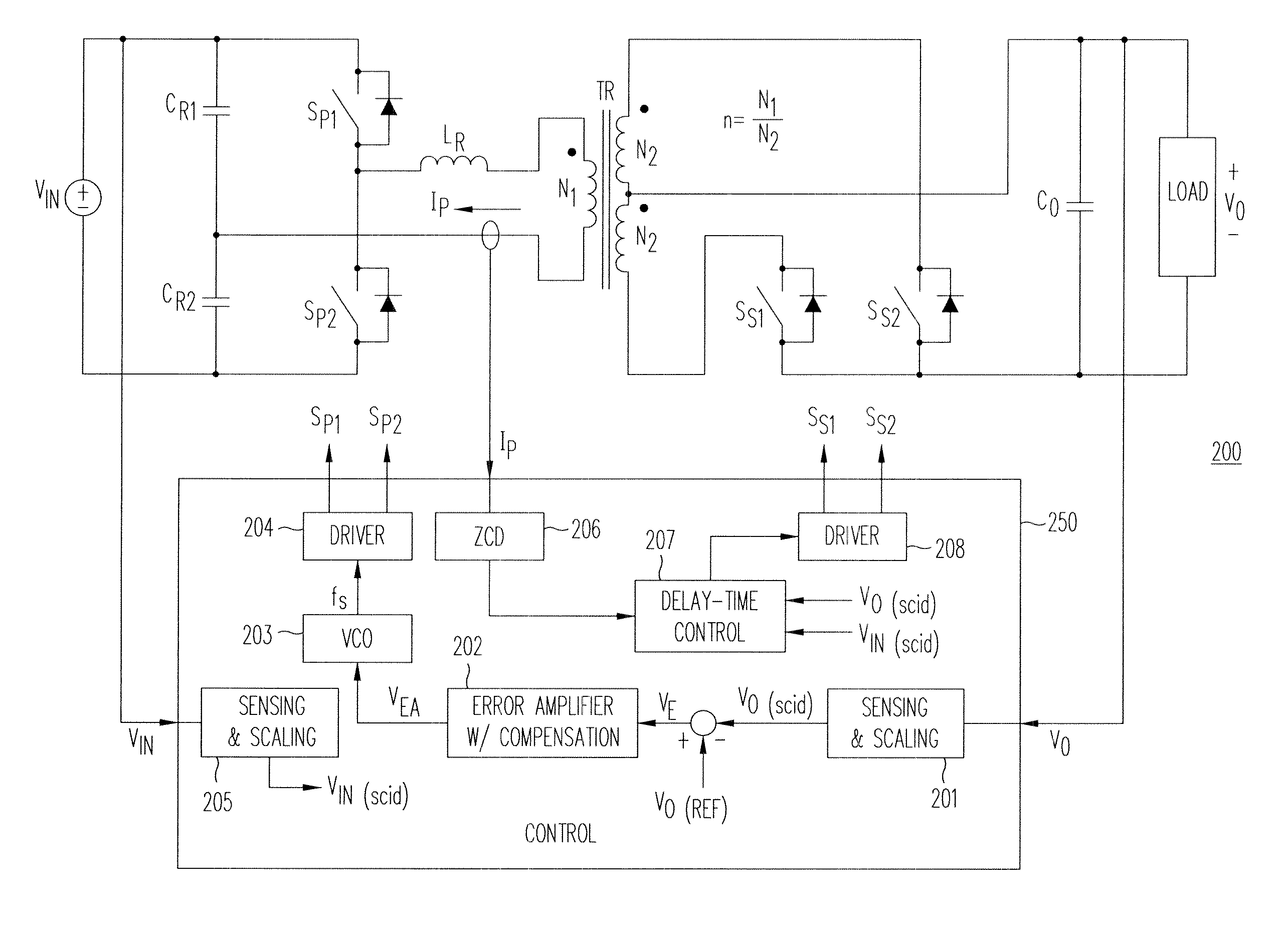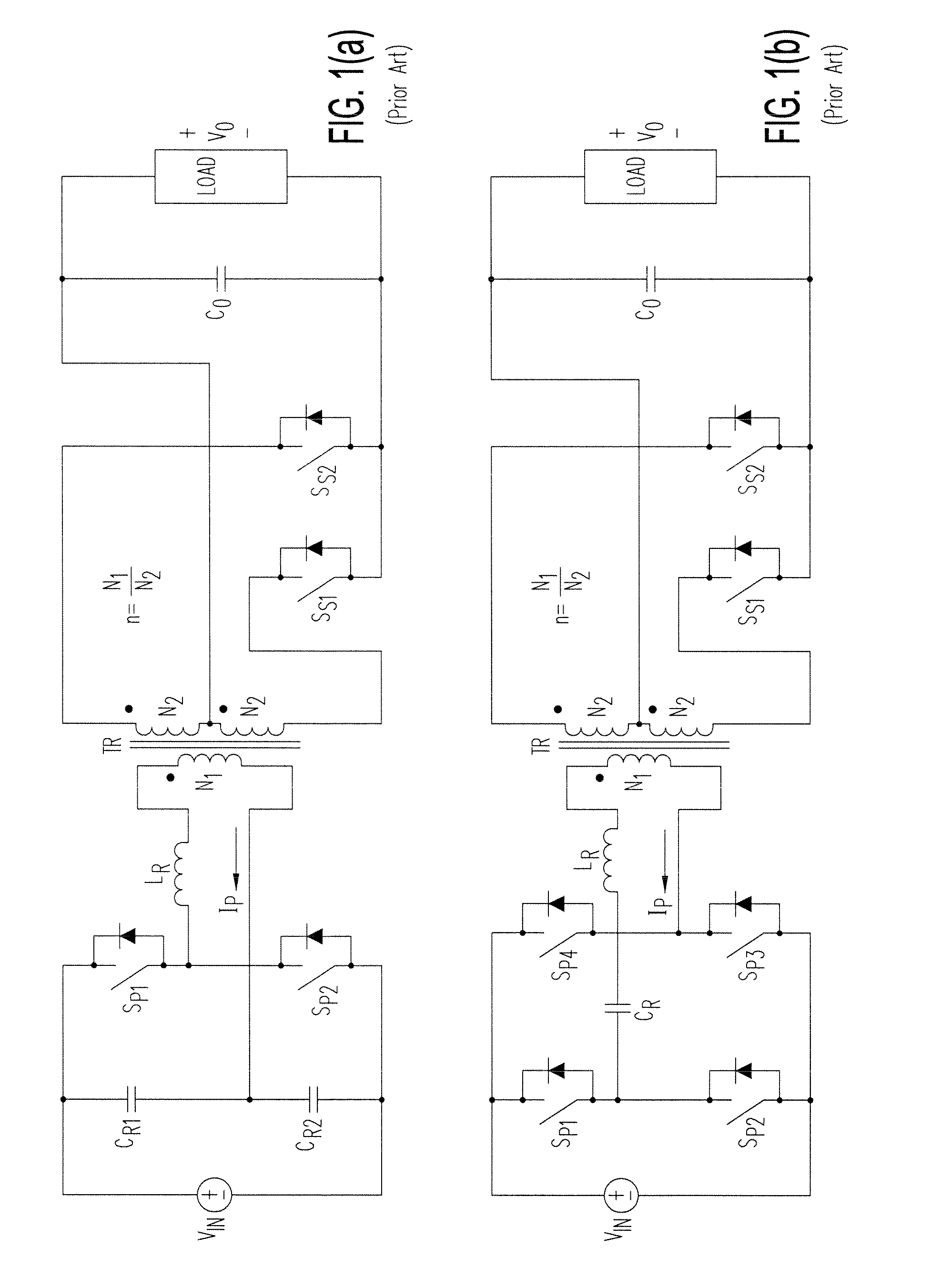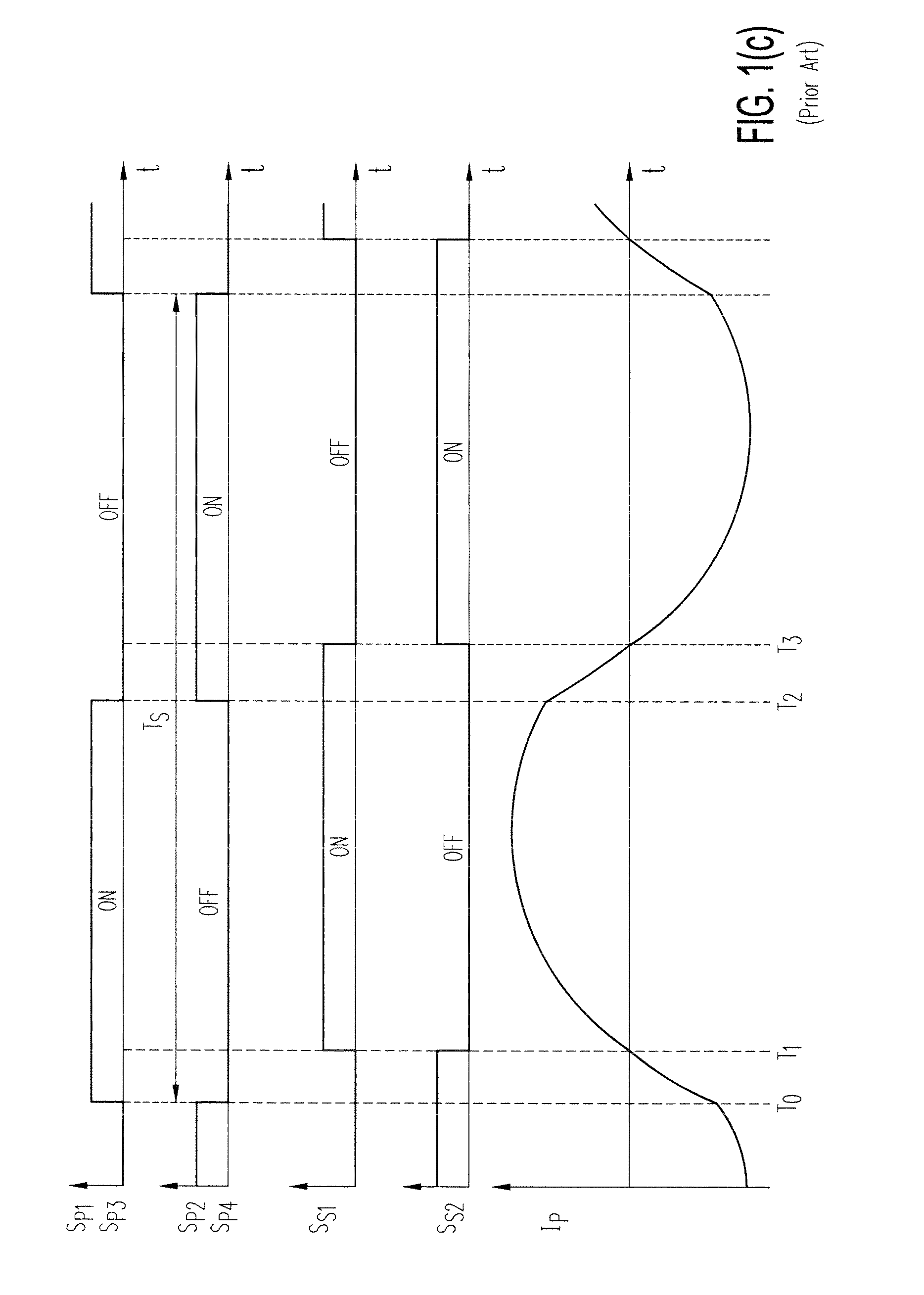System and methods for controlling secondary side switches in resonant power converters
a technology of resonant converters and secondary side switches, applied in the direction of electric variable regulation, process and machine control, instruments, etc., can solve the problems of resonant converters, driving and magnetic component losses, and general drawbacks of variable switching frequency control, so as to improve reduce the switching frequency range. , the effect of improving the performance of resonant converters
- Summary
- Abstract
- Description
- Claims
- Application Information
AI Technical Summary
Benefits of technology
Problems solved by technology
Method used
Image
Examples
Embodiment Construction
[0034]FIG. 2 illustrates a control method in isolated half-bridge series-resonant converter 200 with a center-tap secondary winding in transformer TR, according to one exemplary embodiment of the present invention. (Except for its control circuit, half-bridge series resonant converter 200 has the same topology as the half-bridge resonant converter of FIG. 1(a)). As shown in FIG. 2, the half-bridge series-resonant converter 200 uses an isolation transformer TR with a center-tapped secondary winding. The primary side of the converter includes switches SP1 and SP2, resonant capacitors CR1 and CR2, and resonant inductor LR. The secondary side of the resonant converter includes switches SS1 and SS2 and output or filter capacitor CO, which is coupled across the load. Alternatively, filter capacitor CO may be coupled to the load through a second-stage LC filter. Even when present, the second-stage LC filter does not substantively affect the control method of the present invention. Accordin...
PUM
 Login to View More
Login to View More Abstract
Description
Claims
Application Information
 Login to View More
Login to View More - R&D
- Intellectual Property
- Life Sciences
- Materials
- Tech Scout
- Unparalleled Data Quality
- Higher Quality Content
- 60% Fewer Hallucinations
Browse by: Latest US Patents, China's latest patents, Technical Efficacy Thesaurus, Application Domain, Technology Topic, Popular Technical Reports.
© 2025 PatSnap. All rights reserved.Legal|Privacy policy|Modern Slavery Act Transparency Statement|Sitemap|About US| Contact US: help@patsnap.com



